December 5, 2006
Spent yesterday visiting my sister and her family in Clovis, California. Left early today for the long drive to the Salton Sea State Recreation Area. We plan to spend three nights here. Will bird the surrounding area over the next three days. We so love this area, however, when we got here there were hardly any birds along or in the water. Too much salt? No fish? Hard to know. Will ask at the Sonny Bono National Wildlife Refuge tomorrow. Usually there are thousands of grebes and waterfowl. The area usually teems with shorebirds, cormorants, herons, and egrets. All we had today are gulls and a few American White Pelicans. Weird. Where are all the birds?
December 6, 2016
Every time we visit the Salton Sea there is always something new or different. The difference this time is the water level is much lower than last time we were here – January 2016. Another difference is there are less birds, with the exception of gulls. While there still are a lot of gulls, who knows maybe even their numbers are down.
This morning was a pleasant surprise with Ring-billed Gull, Western Gull (a rarity), Herring Gull, Bonaparte’s Gull, American White Pelican, Brown Pelican, Say’s Phoebe, American Coot, Northern Pintail, Black-bellied Plover, and Marbled Godwit. What a difference a day makes.

The campground “Say’s Phoebe”. Amazing how this bird could hold onto such a small twig.

Morning at the Salton Sea


There were a fair number of gulls along the water’s edge, but this gull decided to hang out near our campsite – waiting for food, no doubt.
We got an early start and headed down to the Wister Wildlife Area, managed by the state. This area generally has thousands and thousands of ducks. Not so today. I doubt we saw more than a couple hundred ducks.

A serious duck hunter


Killdeer

While the central valley of California may have been less dry than in previous visits, here there seemed to be even less water than in previous years.

Peregrine Falcon

White-faced Ibis and Snowy Egrets – the egrets like to follow behind the ibis as they feed.

Some water here, but other areas pretty dry

Great Blue Heron …

… up close. Wow, what a bill.

Well this frog didn’t make it.

But this beetle is still plodding along

Red Hill Marina – well as you can see it would be a little difficult to unload or load a boat from here. Water in the lake was significantly lower than in previous years, or even since last January (2016) when we were last here. It is hard to see the Salton Sea from this photo, but it is at the edge of the sand.
Sonny Bono National Wildlife Refuge
The 32,766 acre Sonny Bono NWR was established in 1930. Of course then it didn’t have its present name, since Sonny Bono wasn’t even born yet. The refuge was renamed the Sonny Bono NWR in 1998 in honor of Sonny’s Congressional work for restoring the Salton Sea.
The refuge is comprised of two different units located 18 miles apart. Today we visited the unit containing the visitor center. This unit includes the Rock Hill trail, which begins at the visitor center and overlooks several fields and ponds, and allows one to check birds utilizing the sea and its shoreline.
Sonny Bono National Wildlife Refuge (NWR) had a number of great species present, including two Burrowing Owls near the visitor center. These little guys are always a treat. We later saw a family of Burrowing Owls near their nest. Another treat was a Black-tailed Gnatcatcher. Our first gnatcatcher for the trip. A Caspian Tern was working its way down a drainage channel. We heard several Sora, but they remained hidden. We were surprised we didn’t see any Snow Geese. Maybe they haven’t made it down yet from the Central Valley of California. And no Long-billed Curlews. This is a first too.


The refuge is undertaking a project to revitalize this area.


These two Burrowing Owls were a show stopper for most refuge visitors. Their burrow is located near the visitor center.

Last January there were a lot of Snow Geese in this field. Now none.
From the Sonny Bono NWR we continued along several back roads bordering the Salton Sea in search of more birds. We weren’t disappointed.

Have no idea what this is.

Have seen shorebirds using this habitat in past years. None today.

Up close view


Killdeer

Great Egret

Great Blue Heron. Both this heron and the egret were in the same general area, but not the same tree.

Long-billed Dowitcher

Long-billed Dowitcher

I believe the remnants of a dead coyote

The sea generally comes up to these rocks

American Avocet and Marbled Godwits

Fun to watch the avocet swish its bill from side-to-side stirring up grub.

Marbled Godwits
On the way back to our campsite – about 30+ miles away – we again took the back roads (many of them dirt) to check out the birds. We were hoping to see some Long-billed Curlews, which we have always seen in the area, but not today. We also check out the sides of the roads for more Burrowing Owls. More than 70 percent of the California Burrowing Owl population can be found within the Salton Sea ecosystem. And we did see three more of the owls. Woohoo!!! They are so small and so cute.

A family of three?


Greater Roadrunner

A pleasant surprise

Jack back at camp taking time out from reading his book to pet Doodlebug
And then the sunset – which is always so beautiful from our campsite.



Bird Species Observed or Heard in the Imperial Valley/Salton Sea
- Pied-billed Grebe
- Eared Grebe
- Clark’s Grebe
- American White Pelican
- Brown Pelican
- Double-crested Cormorant
- Great Blue Heron
- Great Egret
- Snowy Egret
- White-faced Ibis
- Northern Pintail
- Northern Shoveler
- American Wigeon
- Ruddy Duck
- Common Merganser
- Herring Gull
- Ring-billed Gull
- Western Gull
- Bonaparte’s Gull
- Caspian Tern
- Black-bellied Plover
- Killdeer
- American Avocet
- Black-necked Stilt
- Willet
- Marbled Godwit
- Lesser Yellowleg
- Greater Yellowleg
- Long-billed Dowitcher
- Least Sandpiper
- American Coot
- Sora
- Turkey Vulture
- Osprey
- Northern Harrier
- American Kestrel
- Merlin
- Peregrine Falcon
- Red-tailed Hawk
- Gambel’s Quail
- Burrowing Owl
- Mourning Dove
- Eurasian Collared Dove
- Belted Kingfisher
- Common Raven
- American Crow
- Greater Roadrunner
- Loggerhead Shrike
- Black Phoebe
- Say’s Phoebe
- Black-tailed Gnatcatcher
- Marsh Wren
- Barn Swallow
- Tree Swallow
- American Pipit
- Yellow-rumped Warbler
- White-crowned Sparrow
- California Towhee
- Red-winged Blackbird
- Great-tailed Grackle
- Western Meadowlark
- House Finch
December 7, 2016
Got a later start than normal. Our intentions were to head down to the southern unit of the refuge to bird, and then make our way back up to the headquarters. Well we didn’t make it down to the southern unit until after lunch – too busy birding along the way. What prevented us from getting there sooner were the Burrowing Owls we spotted along the way. Along Shrimpf Road we spotted 6 Burrowing Owls each sitting at their burrows. So, assuming each burrow has at least two owls, there were 12 owls total – just along that one stretch of road, which is only a couple of miles long. In total, at the end of the day, we had seen 15 Burrowing Owls and knew of at least 4 others we had seen the day before, but not today as we did not drive along the road where those owls reside. That is a lot of Burrowing Owls in one day. And these owls are ridiculously cute.

Today we also head a beautiful sunrise

Burrowing Owl

We flushed this one from its burrow to the other side of a drainage ditch. He was not happy with us.

This one just stood right outside the window of our van looking up.
We birded along back roads on our way to the southern unit of the refuge – stopping at ponds for waterbirds, and along side the roads in our eternal search for the Long-billed Curlew. Where are you?
Lots of shorebirds were feeding along the southern Salton Sea shoreline – avocets, stilts, dowitchers, godwits. The Least Sandpipers liked to feed a little more inland from the water’s edge.

Sentry? Great Blue Heron

Why are you up so high? To see your prey better up there or is it for safety purposes?

White-faced Ibis

View from one of the refuge ponds

Okay can you see the Merlin in the tree?

Brown Pelican



Common Merganser – female

This was one of about 20 Snowy Egrets loafing on the rocks

American Avocets



There were a lot of birds on the water – many of the birds near shore in the foreground were American Avocets.

Plenty of tires on the beach and elsewhere

Dead Great Blue Heron. I suspect it flew into a vehicle.
At the southern unit of the refuge we did see around 100 Sandhill Cranes. Nice to hear their unison call. Reminds us of home. The marshes had lots of Virginia Rail and Sora calling. Fun to listen to, but they were no-shows.

Sandhill Cranes

We finally saw some Snow and Ross’ Geese, and hundreds and hundreds and hundreds of waterfowl. We took a short walk along a trail, checking out the birds. We did flush a Green Heron.

This where the Virginia Rails were hiding. I heard at least three of them. Darn, so wanted to see one.


The trail

Our van at the viewing platform.

The refuge’s friends group need to do a little litter patrol.

Cooper’s Hawk or Sharp-shinned Hawk? Tail feathers look a little worn.

American Kestrel. I kept hoping the bird would turn around so I could get a better view (and photograph). No such luck.

Green Heron


Loggerhead Shrike

This Great Blue Heron doesn’t look too happy

American Coot

Savannah Sparrow

Burrowing Owl burrow sign post, although the actual burrow was about ten feet away.

Lots of beehive boxes in the area – with active bees. These boxes are generally along side the road requiring one to keep their window closed.
At the visitor center I heard, but couldn’t find the hooting Great Horned Owl. These owls are rare for the refuge. I think the bird was hiding in a palm tree. In previous years Barn Owls have roosted in the palm trees at the refuge headquarters.
Back at our campsite, we were treated once again to another beautiful sunset. These sunsets are why we like this particular campground, as there are other places we could camp in the area.


Bird Species Observed or Heard in the Imperial Valley/Salton Sea Area (birds in bold and underlined are species seen today, but not yesterday)
- Savannah Sparrow
- Great Horned Owl
- California Gull
- Ring-billed Gull
- Herring Gull
- Greater Yellowlegs
- Brown Pelican
- American White Pelican
- Northern Pintail
- Common Raven
- Northern Harrier
- Great Egret
- Great Blue Heron
- American Coot
- Double-crested Cormorant
- Yellow-rumped Warbler
- Burrowing Owl
- Turkey Vulture
- Western Meadowlark
- Black-necked Stilt
- Cooper’s or Sharp-shinned Hawk
- Mallard
- American Wigeon
- Loggerhead Shrike
- Northern Shoveler
- Black Phoebe
- Clark’s Grebe
- Greater Roadrunner
- Long-billed Dowitcher
- Lesser Yellowleg
- Killdeer
- Merlin
- American Kestral
- Rock Pigeon
- Mourning Dove
- Least Sandpiper
- Ruddy Duck
- Marbled Godwit
- American Avocet
- Willit
- American Pipit
- Eared Grebe
- Common Merganser
- Lesser Scaup
- Snowy Egret
- Peregrine Falcon
- White-crowned Sparrow
- Belted Kingfisher
- Cattle Egret
- Red-tailed Hawk
- Sandhill Crane
- Snow Goose
- Viriginia Rail
- Gadwall
- Green-winged Teal
- American Bittern
- Green Heron
- Blue-gray Gnatcatcher
- Marsh Wren
- Red-winged Blackbird
- Tree Swallow
- Song Sparrow
- Eurasian Starling
- Say’s Phoebe
December 8, 2016
Woke up to sunny skies and a light wind. We checked out the birds along the shoreline. What a difference from the day we arrive (two days ago). We went from gulls and pelicans to 17 different species:
- Ring-billed Gull
- Herring Gull
- California Gull
- Western Gull
- Say’s Phoebe
- Yellow-rumped Warbler
- Red-winged Blackbird
- Killdeer
- Least Sandpiper
- Black-bellied Plover
- Greater Yellowleg
- Marbled Godwit
- Willet
- Brown Pelican
- White Pelican
- Black-tailed Gnatcatcher
- Northern Shoveler

Habitat around our campground


These shell casings are everywhere along the beach and sometimes several feet deep.

Our resident Say’s Phoebe




I think the birds like this particular area because of the fresh water flowing into the lake
We packed up the van and headed towards Joshua Tree National Park. I hated to leave the Salton Sea area. I always enjoy our visits. This year, the water is much lower and the smell is almost non-existent. At times it can be pretty smelly here. And very little in the way of dead fish – Corvina. That doesn’t bode well for the pelicans and other birds that feed on the Corvina.
We decided to stop off at the Salton Sea State Recreation Area visitor center and campground to bird. We walked the campground and checked out the marina. Lots of bird life. We had 33 species within 1.5 hours.

Black-necked Stilt


Eared Grebes

American Pipit

Corvina scales

Black-bellied Plover

Black-bellied Plover

Herring Gull

I was surprised to find this Black-necked Stilt on a dock

Black-tailed Gnatcatcher

Black-tailed Gnatcatcher

Head of a dead bird

Spotted Sandpiper in winter plumage – no spots


Woohoo!!! Another Green Heron

Black Phoebe
Bird Species Observed or Heard at Salton Sea SRA Visitor Center/Campground
- Black Phoebe
- Black-necked Stilt
- Common Raven
- Eared Grebe (they liked hanging out in the marina)
- Ruby-crowned Kinglet
- Verdin
- American White Pelican
- Brown Pelican
- American Pipit
- Common Merganser
- Cactus Wren
- Red-naped Sapsucker
- Least Sandpiper
- Killdeer
- Willet
- Black-tailed Gnatcatcher
- Say’s Phoebe
- Tree Swallow
- Northern Mockingbird
- American Kestrel
- Phainopepla
- Spotted Sandpiper
- Green Heron
- Great Blue Heron
- Hummingbird sp. (most common are Costa’s or Anna’s)
- White-crowned Sparrow
- Herring Gull
- Ring-billed Gull
- Abert’s Towhee
- Northern Shoveler
- European Starling
- Northern Harrier
- Lesser Scaup
[The bird species highlighted and underlined are new to the total list of bird species observed or heard while visiting the Salton Sea area.]
The Salton Sea SRA visitor center is a good place to bird because you have both the water and upland. The campground has mesquite trees and creosote bushes, which the birds love. Worth the stop. In 2013, we even had a Prothonotary Warbler.
From the Salton Sea SRA visitor center and campground we headed to the Dos Palmas Preserve and the San Andres Palm Oasis. We stopped at the San Andres Palmo Oasis first and took the short hike through the palms. Man are they tall. Makes you feel like a dwarf.



Entrance to the Palms


Female Phainopepla


This palm is at least five feet wide (probably more)



And you get to walk among them. Here is Jack and Doodlebug.

Me and Doodlebug on the trail




And sometimes they fall





So are these sucker palms or a separate plant? I’m not sure.





Hmmmm. There must have been some theft of the wires in the past. We saw this sign on several poles.

Pretty desolate countryside around the palms. Maybe the palms suck up all the water.
We decided to forego the Dos Palmas Preserve. We have been here several times before, but did not have a dog then. We weren’t sure whether you could bring a dog in or not. No signs telling you dogs are not allowed, but it was a bit of a hike on a road, in the hot sun (we are in the desert), and we weren’t sure Doodlebug would be up to the hike. So off we drove to Joshua Tree National Park via a box canyon. Interesting geology. Free camping too if you don’t mind disbursed camping (i.e., no amenities whatsoever). The area is under the management of the Bureau of Land Management (as is the Dos Palmas Preserve).











Tonight we are camping at Belle campground within the national park. There are only 18 campsites. We found a nice, somewhat isolated campsite – not too close to other campers, although near the fee station. Not many birds here – only two Common Ravens, two Cactus Wren, and one Rock Wren. The desert here is beautiful, especially as the sun shines on the different cactus plants. And the rocks. Big (and I mean big) boulders. We are camped next to one.

Not all of the park has Joshua Trees



Common Raven




Silver Cholla


Diamond Cholla


Doodlebug at our campsite

Rock Wren

Rock Wren

Our camp site

Cactus Wren



This rock reminds me of a closed fist

December 9, 2016
We had originally planned to stay two nights in Joshua Tree but decided to go onto Kofa NWR. We took an alternative route – a road less traveled. I think Highway 62 from Twenty-Nine Palms to the Arizona Border could be called the Loneliest Highway in the U.S.
We made a short detour and took a road into the Sheephole Wilderness Area (BLM). A well maintained road, and wide. In fact, someone was grading the road while we were on it. Not sure what the attraction is, maybe ATV/4Wheel Drive use or access to a mining area? Beautiful, desolate area. I would definitely check this area out in the future. I’m sure there is some off road camping. In fact, we saw an old VW bus parked just off the road and a lot of gear outside the bus. Not sure where the owner was – maybe sleeping???

This Ladderback Woodpecker was right next to our camp site this morning.






The previous photos were taken along Highway 62. This last photo is taken on the road into the BLM Sheephead’s Wilderness Area. Very desolate.
Made it to Kofa NWR while it was still light. We usually go up the Kofa Queen Canyon Road (4-WD recommended) and camp, but decided to camp (dispersed) just short of the refuge on BLM land. We set up camp, such as it is, and ate dinner as we watched the beautiful sunset, which seemed to last forever.



Tomorrow – birding at Cibola National Wildlife Refuge. Until then …
IT’S A GREAT DAY TO BIRD





































































































































































































































































































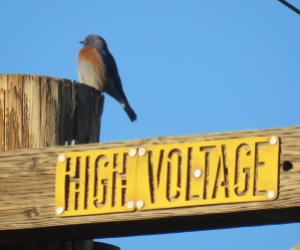
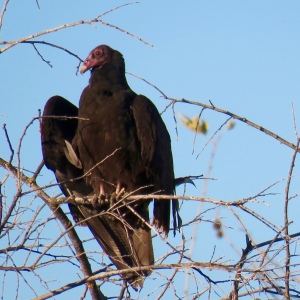

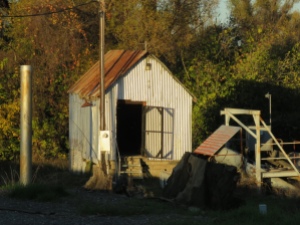

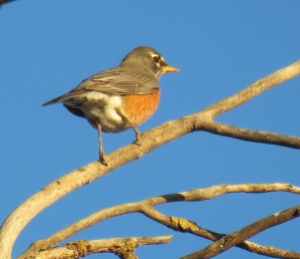

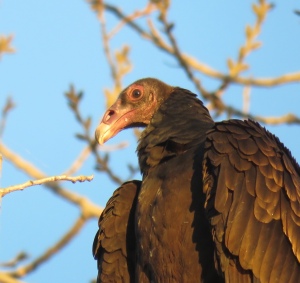





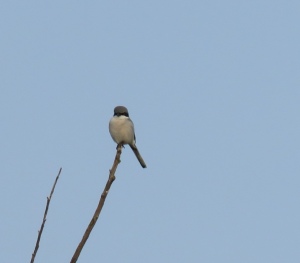
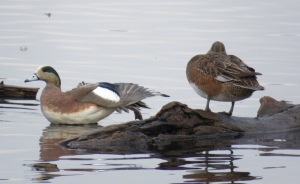
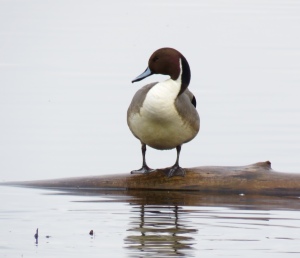


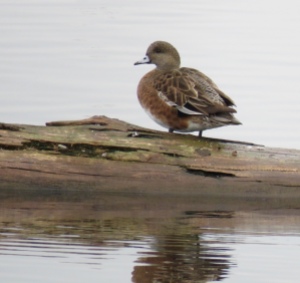



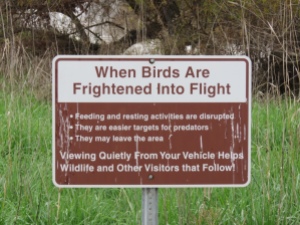
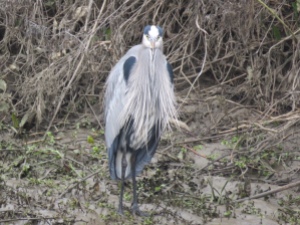
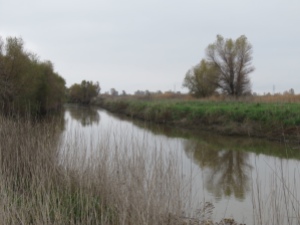




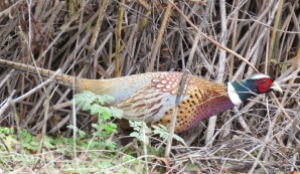





























































































Recent Comments